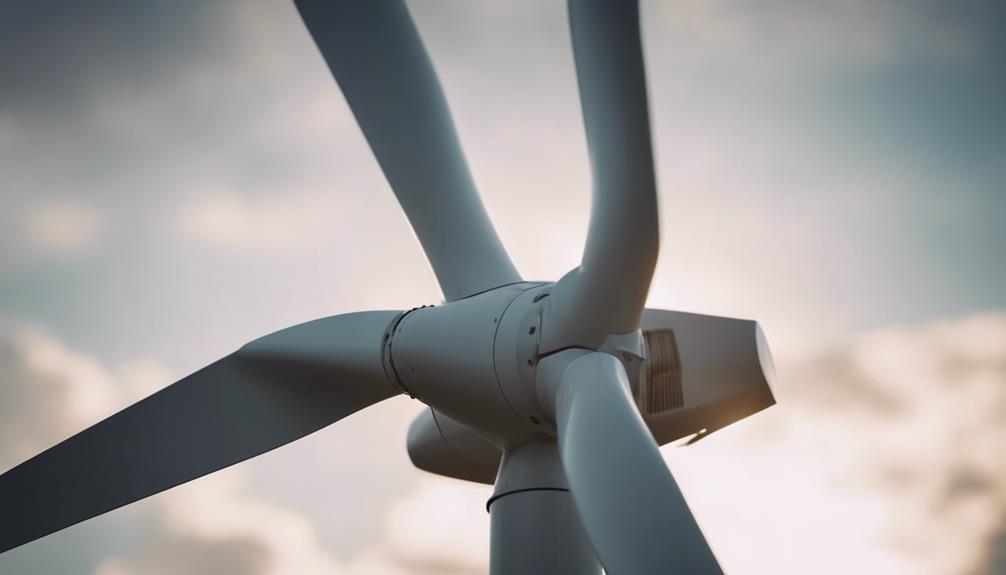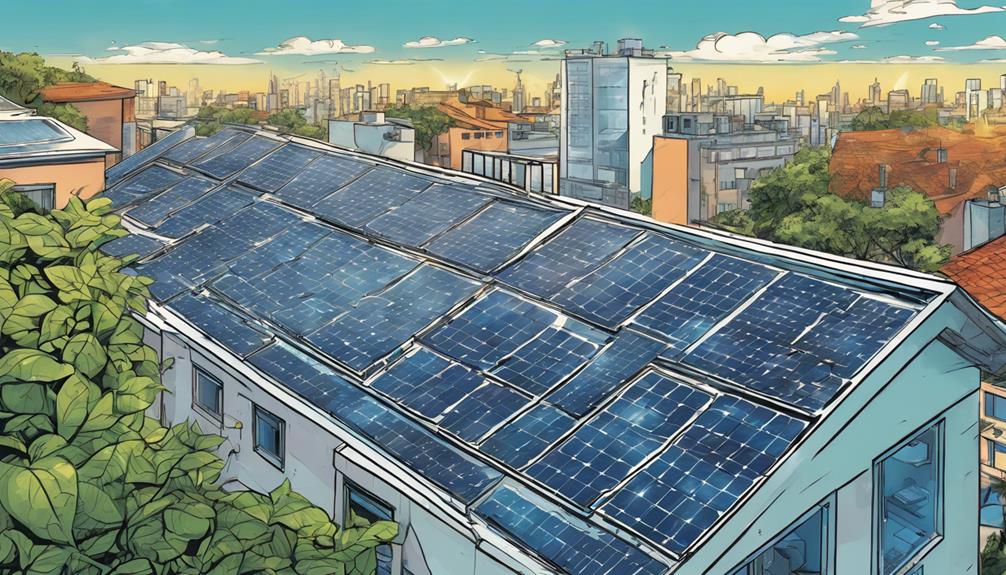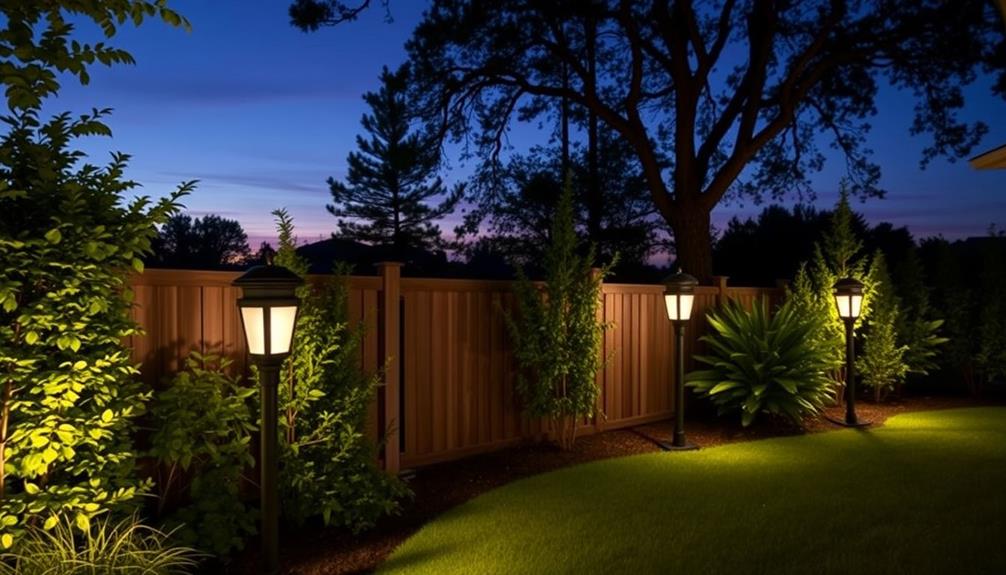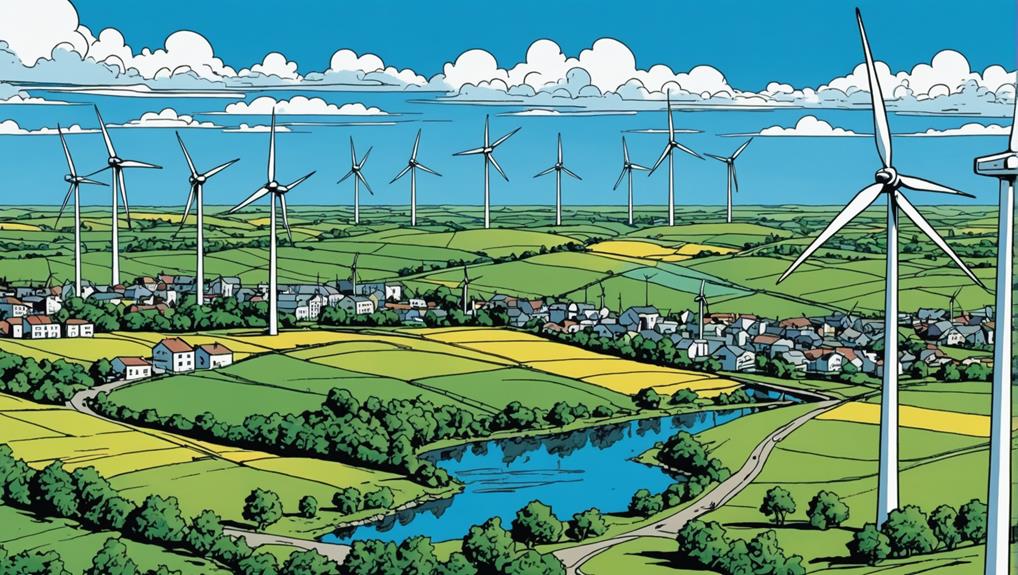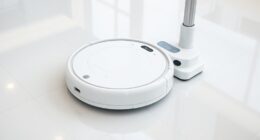To prevent damage, wind turbines are stopped at speeds exceeding 55 miles per hour. This helps safeguard vital components and guarantee safe operation in extreme conditions. By halting turbines at this pivotal threshold, you protect them from excessive stress risks. Remember, it's important to adhere to safety limits to prevent costly damages and downtime. If you want to know more about wind turbine safety measures and operational cutoff speeds, the information provided can offer valuable insights.
Key Takeaways
- Wind turbines are stopped above 55 mph to prevent damage.
- Braking mechanisms halt turbine blades in unsafe wind conditions.
- Safety measures protect critical components from high wind forces.
- Shutdown speeds are set to safeguard turbine longevity and efficiency.
- Adhering to manufacturer specifications ensures safe operation within speed limits.
Wind Turbine Shutdown Speed
Knowing the wind turbine shutdown speed is important for safeguarding the turbine components during high wind conditions. Wind turbines need to have a cut-out speed, a threshold at which they're stopped to prevent damage. This cut-out speed is determined based on the turbine model and is essential for protecting the rotor and other crucial components.
The braking system in wind turbines plays a key role in ensuring that the turbine can safely come to a halt when wind speeds exceed the designated cut-out speed. By automatically shutting down when wind speeds reach unsafe levels, these systems prevent potential harm to the turbine's integrity.
Designing turbines with these safety mechanisms is paramount to avoid structural damage or mechanical failure caused by excessive wind forces. The cut-out speed is carefully calibrated to strike a balance between maximizing energy production and safeguarding the turbine from the risks associated with high wind speeds.
Wind Speed Safety Measures
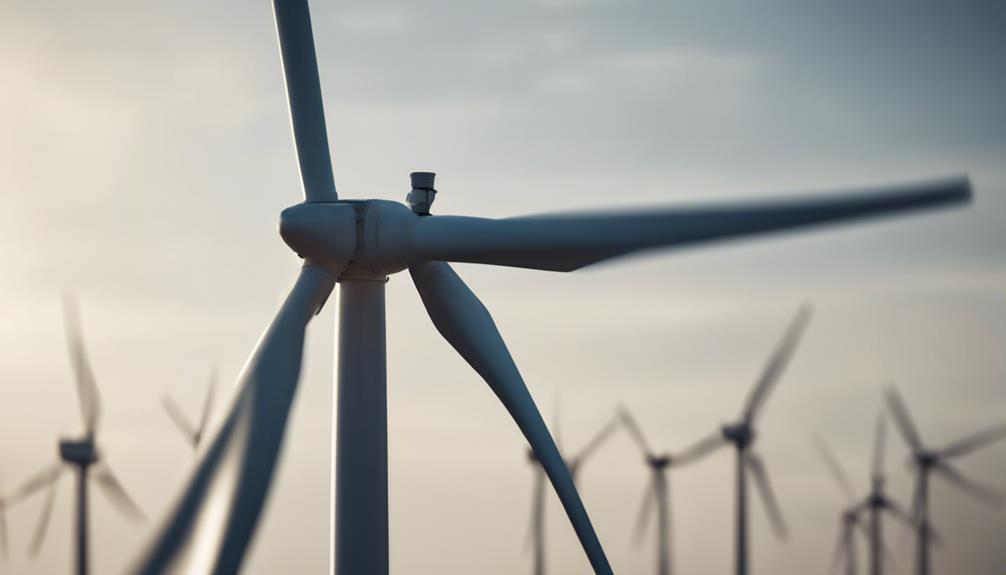
You need to understand how wind speed safety measures play an essential role in protecting wind turbines from damage.
By setting specific shutdown speeds, turbines prevent potential harm caused by high wind speeds.
These safety protocols are necessary for the longevity and best performance of wind energy systems.
Turbine Shutdown Speed
The turbine shutdown speed, typically set at wind speeds exceeding 55 mph, is a crucial safety measure to prevent damage and achieve peak performance. When wind speeds reach this threshold, the braking systems kick in to stop the turbine blades from spinning too fast, safeguarding the equipment from potential harm.
Anemometers play an essential role in this process by measuring wind speed and triggering automatic shutdowns when necessary. These shutdown speeds aren't arbitrary; they're calculated using power curve equations to ensure best turbine performance while mitigating risks associated with high wind speeds.
Preventing Wind Damage
Wind speed safety measures in wind turbines are essential for preventing damage and ensuring longevity. When high winds pose a threat to wind turbines, preventative actions are vital. Turbines are equipped with anemometers that continuously monitor wind speeds.
Once wind speeds exceed safe limits, typically around 55 mph, the turbines are automatically stopped to prevent damage. Additionally, turbines have programmed cut-out speeds as a protective measure against high winds. To halt the rotation of the turbine blades swiftly, braking systems such as pitch and mechanical brakes are activated.
These safety measures are carefully designed and implemented to mitigate the risk of wind-induced damage. By promptly stopping the turbines in adverse wind conditions, operators can safeguard the equipment, prevent potential harm, and extend the overall lifespan of the wind turbines. Prioritizing these preventative measures is essential in ensuring the efficiency and durability of wind turbine systems.
Turbine Damage Prevention Speed

To prevent damage to turbines, controlling the rotational speed is vital in safeguarding the components from high wind forces. Wind turbines have a cut-out speed, which is the maximum wind speed at which the turbine can operate safely. When wind speeds exceed this limit, automatic shutdown mechanisms are triggered to protect the rotor and other critical parts from potential damage.
Excessive wind speeds can exert immense stress on the blades and structure of the turbine, leading to possible failures if not addressed promptly. Safety measures such as pitch control, mechanical braking, and yaw systems come into play to halt the turbine from spinning at unsafe speeds. By implementing these precautions, turbine operators ensure the longevity and efficiency of the wind energy system while mitigating the risks associated with high wind forces.
It's important to adhere to these speed limits to prevent costly damages and downtime in wind turbine operations.
Wind Turbine Safety Limits
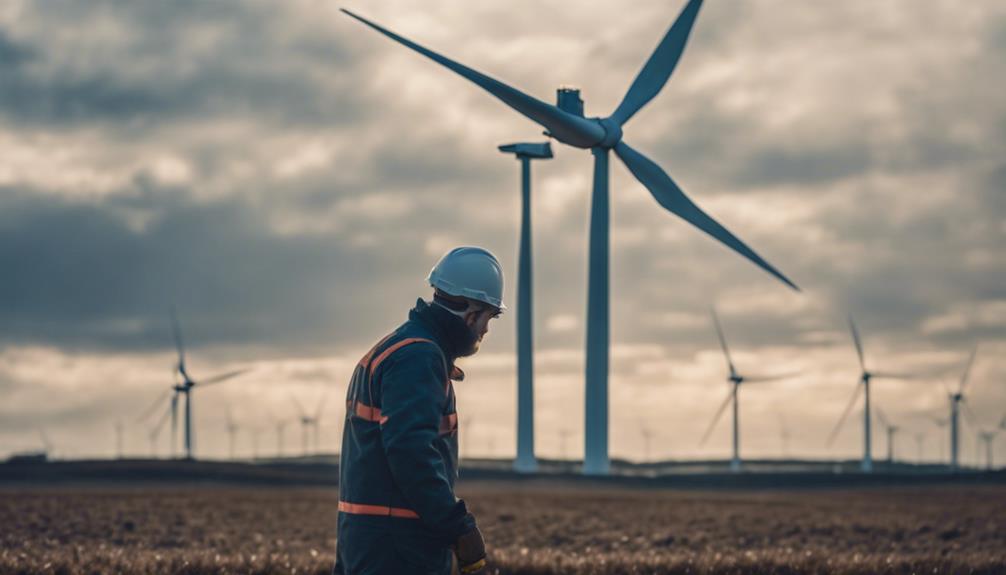
You need to understand the significance of safety speed thresholds when it comes to wind turbines. These limits are vital for preventing turbine damage and ensuring the protection of both the equipment and surrounding areas.
Safety Speed Thresholds
Safety speed thresholds for wind turbines play an essential role in preventing damage and ensuring operational longevity. When wind speeds surpass safe limits, mechanisms are in place to protect the turbine from potential harm.
Here's why safety speed thresholds are vital:
- Protection: Safety speed thresholds shield wind turbines from excessive wind speeds, safeguarding the equipment from damage.
- Longevity: By halting operation at specific wind speeds, turbines can maintain their structural integrity and extend their operational lifespan.
- Automatic Shutdowns: Turbines are equipped with automatic shutdown systems that activate when wind speeds exceed safe operating thresholds, preventing potential damage.
- Braking Systems: Braking systems such as pitch control and mechanical brakes are critical in stopping turbine blades from spinning too fast, ensuring safe operation within designated speed limits.
These safety measures not only protect the wind turbine itself but also the surrounding environment and individuals in the vicinity.
Preventing Turbine Damage
Wind turbines are typically stopped to prevent damage when wind speeds exceed the cut-out speed, which varies by turbine design and size.
It's important for wind turbines to have safety measures in place to make sure they survive severe weather conditions.
The risks of turbines spinning at high speeds include potential mechanical stress, leading to equipment failure.
Braking systems, such as pitch and mechanical brakes, play a significant role in preventing turbine damage by controlling the rotational speed of the blades.
These systems are designed to activate when wind speeds surpass safe limits, typically set above 55 mph.
Additionally, turbines are equipped with preset speed limits programmed into their systems to guarantee safe operation and longevity.
Shutdown for Protection
Implementing strict safety limits on wind turbines is crucial for protecting the equipment from potential damage during extreme weather conditions. When wind speeds surpass the safe operating range, shutdown for protection becomes necessary to prevent harm.
Here's why wind turbines require careful shutdown mechanisms:
- Critical Wind Speeds: Wind turbines require shutdown for protection when wind speeds exceed the cut-out speed, typically around 55 mph.
- Component Safeguard: Automatic shutdown mechanisms are essential to safeguard the turbine's components from damage during high wind speeds.
- Braking Systems Activation: Systems like pitch control or aerodynamic braking are activated to halt the rotor swiftly and prevent structural damage.
- Operational Efficiency: Wind turbine safety limits are meticulously set to guarantee that the equipment withstands extreme wind forces and maintains operational efficiency.
Wind Turbine Operational Cutoffs
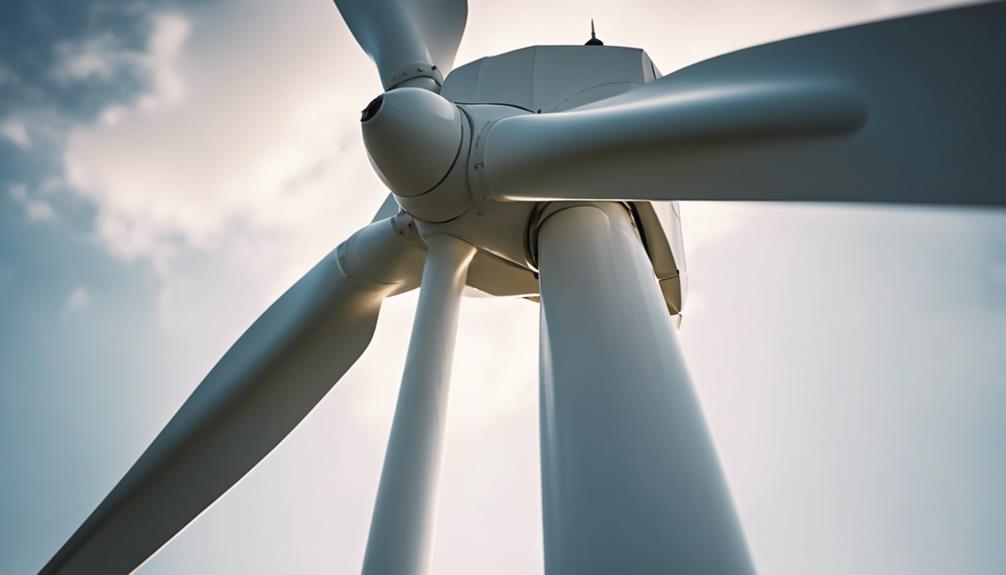
At what wind speeds do wind turbines typically undergo operational cutoffs to prevent damage?
Wind turbines are commonly stopped when wind speeds exceed 55 mph to prevent potential harm. These operational cutoff speeds aren't universal and vary based on the specific turbine model and design. Automatic shutdown systems are in place to trigger at predetermined cut-out speeds, safeguarding the turbine from harm.
The importance of these operational cutoffs lies in protecting the turbine from overloading and structural harm that can occur at high wind speeds. By halting operations at essential wind speeds, the turbine's longevity and efficiency are preserved.
Preventing damage through operational cutoffs ensures that the turbine can continue functioning optimally and sustainably over time. Adjusting cutoff speeds based on different turbine specifications is key to maintaining the safety and effectiveness of wind energy systems.
Preventing Turbine Overstress Speed
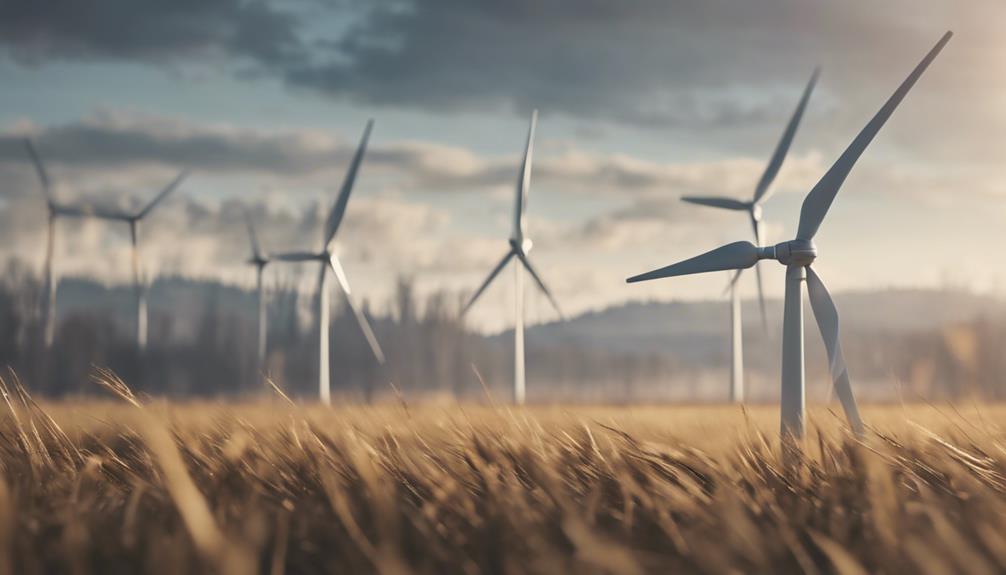
To protect the turbine components and guarantee safe operation, it's vital to effectively prevent turbine overstress speed. When wind speeds reach levels that could potentially damage the wind turbine, specific measures need to be taken to avoid overstressing the system:
- Monitoring Systems: Implementing advanced monitoring systems that can detect increases in wind speed and react accordingly is essential to preventing turbine overstress speed.
- Automatic Shutdown Protocols: Having automatic shutdown protocols in place ensures that the turbine stops operating before reaching damaging wind speeds.
- Braking Mechanisms: Utilizing efficient braking mechanisms such as pitch control and mechanical brakes helps prevent the turbine from spinning too fast and encountering overstress.
- Regular Maintenance: Conducting routine maintenance checks and inspections can help identify potential issues early on, reducing the risk of turbine damage due to overstress speed.
Turbine Safety Shutdown Threshold

For maintaining the wind turbine's safety and longevity, understanding the turbine safety shutdown threshold is key. When wind speeds reach levels exceeding 55 mph, the shutdown threshold is typically activated to prevent damage to critical turbine components.
High wind speeds can exert excessive stress on the blades, gearbox, and other necessary parts of the wind turbine, potentially compromising its functionality and lifespan. To protect against such risks, automatic shutdown mechanisms are put in place to halt operations and safeguard the turbine from potential harm.
These safety protocols are necessary for sustaining the operational efficiency and structural integrity of the wind turbine. By adhering to specific shutdown thresholds determined by the turbine's design and manufacturer specifications, operators can mitigate the negative impacts of high wind speeds and guarantee that the turbine operates within safe parameters.
Ultimately, understanding and adhering to the turbine safety shutdown threshold is essential for preserving the wind turbine's functionality and preventing costly damage.
Wind Turbine Speed Control
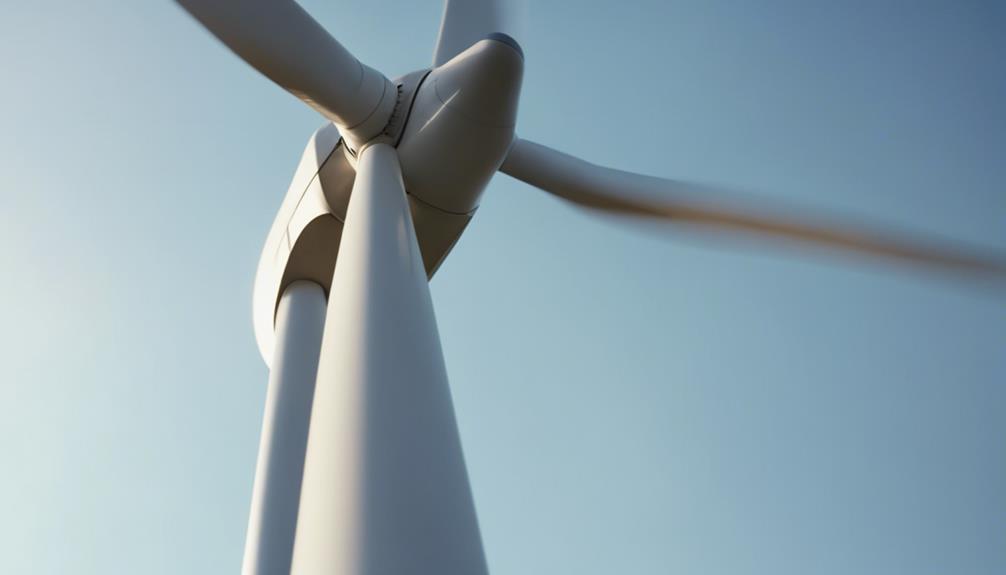
Wind turbines employ various speed control mechanisms to regulate their operation and prevent damage in high wind conditions.
- Braking Systems: When wind speeds exceed safe limits, braking devices like aerodynamic and mechanical brakes are activated to stop the blades from spinning too fast, preventing damage.
- Accelerometers: These sensors detect wind speeds surpassing the preset maximum speed, prompting safety mechanisms to engage and slow down the turbine.
- Yaw Drive Systems: In high winds, yaw drive systems adjust the blade direction to halt rotation, safeguarding the turbine from potential harm.
- Programmed Features: Turbine internal systems are programmed to control maximum speeds, ensuring safe operation even during extreme wind conditions.
These control mechanisms work together to manage wind turbine speed, ensuring that the turbines operate within safe limits and prevent damage caused by high winds. By employing these systems, wind farms can maximize energy production while prioritizing the safety and longevity of their equipment.
Critical Wind Speed for Turbines
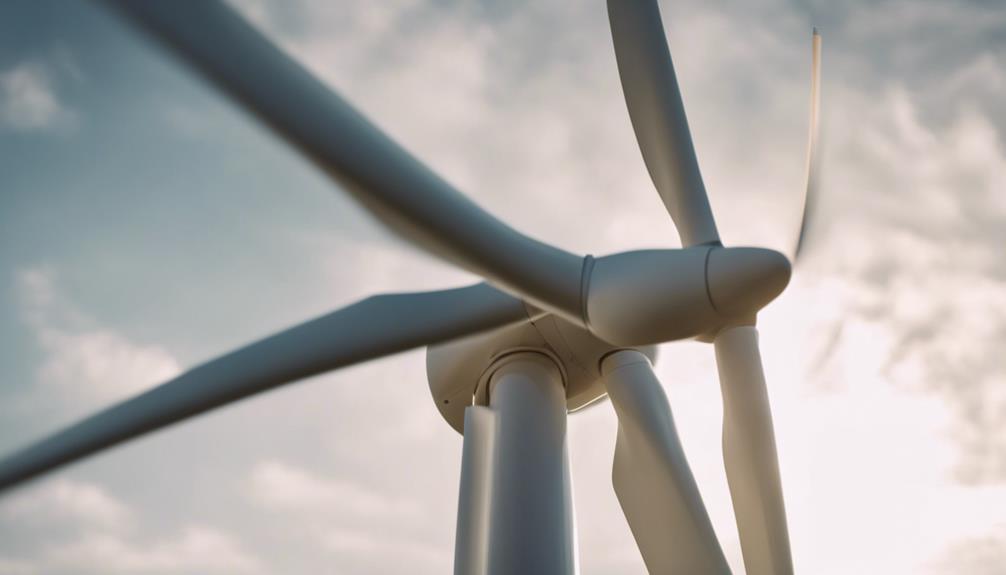
When wind speeds reach the pivotal threshold, turbines are typically stopped to prevent structural damage. The pivotal wind speed for stopping turbines is generally around 55 mph to safeguard the components from potential harm.
Turbines have safety mechanisms that automatically shut down the operation when wind speeds exceed safe limits. By halting the turbines at high wind speeds, the rotor, blades, and other essential parts are shielded from damage that could compromise their integrity.
Exceeding the pivotal wind speed can subject the turbine structure to excessive stress, jeopardizing its longevity and efficiency. It's essential to adhere to these safety protocols to guarantee the longevity and optimal functioning of wind turbines.
Frequently Asked Questions
At What Speed Is the Wind Turbine Stopped so That Damage Does Not Occur?
When wind speeds exceed safe limits, wind turbines are stopped to prevent damage. They are halted at speeds above the cut-out threshold, usually around 55 mph. Braking systems engage to protect the structure from harm.
What Is the Cutoff Speed of a Wind Turbine?
The cutoff speed of a wind turbine varies, typically between 55-90 mph, programmed to shut down automatically when exceeded. This prevents damage to the rotor and components, ensuring longevity and safety in varied weather conditions.
At What Speed Does Wind Cause Damage?
When wind speeds are too high, they can cause damage to wind turbines. Excessive speeds lead to structural stress, overheating, and wear on components. To prevent this, turbines automatically shut down when wind reaches critical levels.
What Is the Survival Wind Speed of a Wind Turbine?
The survival wind speed of a wind turbine varies, with larger turbines able to withstand higher speeds. They are designed to shut down automatically at around 55 mph to prevent damage. Safety mechanisms guarantee protection.
What Measures Are Taken to Prevent Wind Turbine Damage in Extreme Weather Conditions?
When it comes to wind turbine risks and safety measures, there are several precautions taken to prevent damage in extreme weather conditions. This includes regular maintenance and inspection to ensure structural integrity, as well as technology and design advancements to withstand high winds and other severe weather events.
Conclusion
You now know at what speed the wind turbine is stopped to prevent damage. By understanding the safety measures and operational cutoffs, you can guarantee the turbine runs smoothly and efficiently.
Remember the critical wind speed for turbines and take control of the speed to prevent overstress. Stay informed and keep the turbine operating within safe limits to avoid any potential damage.
